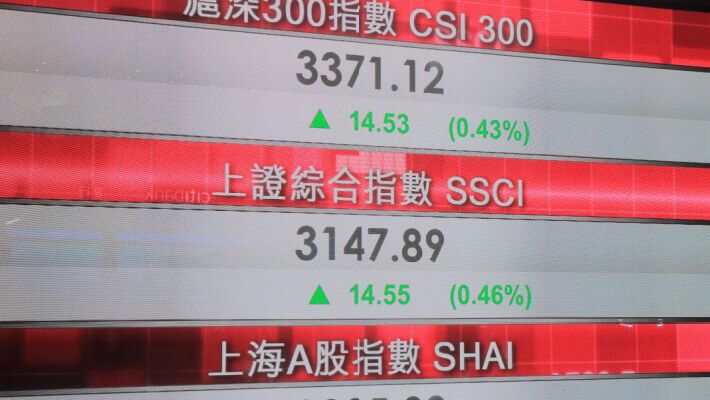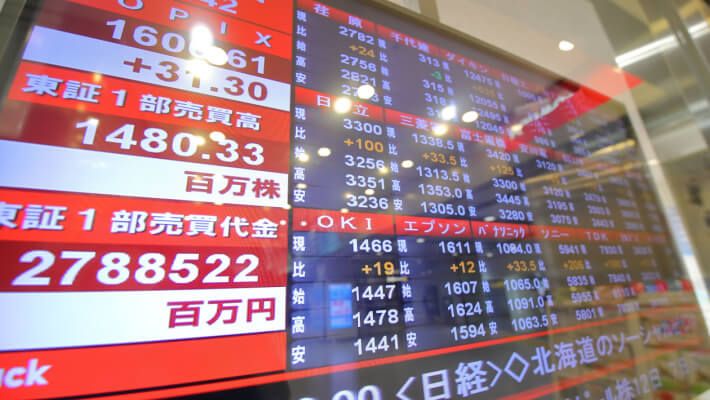Thursday Nov 23 2023 07:57

8 min

The world of Chinese stocks is vast and diverse, offering a multitude of investment opportunities for those seeking exposure to one of the world's most dynamic economies.
Out of the many CFD indices tracking Chinese equities, the China CSI 300 Index stands out as a vital benchmark.
The China CSI 300 AMC Index serves as a vital barometer for the performance of China's A-shares market. It showcases the country's economic dynamism.
In this article, we'll touch on what the China CSI 300 Index is, and the difference between A-share and H-share companies. We’ll also look at the role of stock exchanges in Shenzhen, Shanghai, and Hong Kong.

The China CSI 300 AMC Index, often simply referred to as the CSI 300 or the China CSI 300 Index, is a prominent stock market index in China.
It tracks the performance of the top 300 A-share companies listed on the Shanghai and Shenzhen stock exchanges.
A-share companies are those that primarily cater to domestic Chinese investors and are denominated in the local Chinese currency, the renminbi (RMB or CNY). H-share companies focus more on investors from other countries.
The China CSI 300 Index reflects China's rapidly growing economy and its increasingly prominent role in the global financial arena.
By focusing on the largest and most representative companies, the CSI 300 provides a snapshot of the overall health and direction of China's stock market.
As mentioned, the China CSI 300 Index or CSI 300 is a stock market index that tracks the performance of the top 300 stocks traded on the Shanghai and Shenzhen Stock Exchanges.
It consists of two sub-indexes, the CSI 100 and CSI 200.
Often compared to the S&P 500, it's seen as a more reliable indicator of the Chinese stock market than the SSE Composite Index.
Managed by the China Securities Index Company, the China CSI 300 Index or CSI 300 Index is considered a benchmark for exchanges in mainland China.
The index has been in operation since 8 Apr 2005, with a base value of 1000 on 31 Dec 2004.
To understand the China CSI 300 AMC Index, let’s first look at how companies with A-shares and H-shares are different. These classifications are fundamental in the Chinese stock market.
Primarily domestic investors: As we briefly mentioned, A-share companies primarily target domestic Chinese investors. The shares of such companies are traded on the Shanghai and Shenzhen stock exchanges and quoted in RMB.
Limited access for foreign investors: Historically, A-shares were not readily accessible to foreign investors. However, recent reforms have allowed greater foreign investment through the Stock Connect programs linking the Hong Kong Stock Exchange with the Shanghai and Shenzhen exchanges.
Regulated by the China Securities Regulatory Commission (CSRC): The CSI 300 Index comprises the top 300 A-share companies that are well-established and influential in China. However, these A-share companies are subject to regulatory control by the CSRC. which imposes strict trading rules and regulations.
International focus: H-share companies, on the other hand, primarily target international investors. They are listed on the Hong Kong Stock Exchange and are available in various currencies, including the Hong Kong Dollar (HKD) and the US Dollar (USD).
Easier access for foreign investors: H-shares have traditionally been more accessible to foreign investors, making them a gateway for international capital into Chinese enterprises.
Regulated by the Hong Kong Securities and Futures Commission (SFC): H-share companies are regulated by the SFC, which tends to follow international standards and practices.
Not part of the CSI 300: H-share companies are not included in the CSI 300 Index. Instead, they form part of other indices, such as the Hang Seng Index, which tracks the performance of leading companies listed in Hong Kong.
China's stock market is unique in that is made up of various exchanges that serve different purposes and types of investors. Let’s take a look at each of them.
Hub for A-shares: The SSE is one of China's primary stock exchanges and is known for hosting A-share companies. It plays a pivotal role in the domestic Chinese stock market.
CSI 300 constituent: The Shanghai stock exchange is home to many companies that are part of the CSI 300 AMC Index, making it a key contributor to the CSI 300 Index’s performance.
High-tech focus: The SZSE is well-known for its focus on high-tech and innovative companies. It is a hub for smaller and growth-oriented firms, which are essential for China's economic transformation.
Lists A-shares: Like the SSE, the SZSE also lists A-share companies, contributing to the representation of these firms in the CSI 300 Index.
Gateway to international markets: The HKEX offers access to Chinese companies that are looking for global investors. It hosts H-share companies, allowing them to raise capital on international markets.
Dual listings: Many Chinese companies opt for dual listings. This means they are listed both in mainland China (A-shares) and Hong Kong (H-shares). This enables them to tap into both domestic and international pools of capital.
Linkages with mainland exchanges: Through Stock Connect programs, the HKEX is connected with the Shanghai and Shenzhen exchanges. This allows investors in Hong Kong to access A-shares and vice versa.
The China CSI 300 Index: In a nutshell
The China AMC CSI 300 Index comprises 300 stocks from A-share companies in China. Generally only available to Chinese citizens, A-shares are stocks that are traded on the Shenzhen or Shanghai stock exchanges.
Hence, they command a significant premium compared to H-shares, which are listed on the HKEX and are mainly available to foreign investors.
Interested in trading assets relating to the Chinese market? Try trading the China AMC CSI 300 Index CFDs on markets.com now.
You can read more about how to trade CFD assets at our Education Centre.
In addition, the China AMC CSI 300 Index ETF mirrors the performance of the CSI 300 Index, which serves as a benchmark of 300 of the largest and most liquid Chinese stocks.
You can join our amazing community today to embark on your trading journey.
Use virtual currency in our demo account to practice trading with confidence.
"When considering "CFDs" for trading and price predictions, remember that trading CFDs involves a significant degree of risk and could result in capital loss. Past performance is not indicative of any future results. This information is provided for informative purposes only and should not be construed to be investment advice."